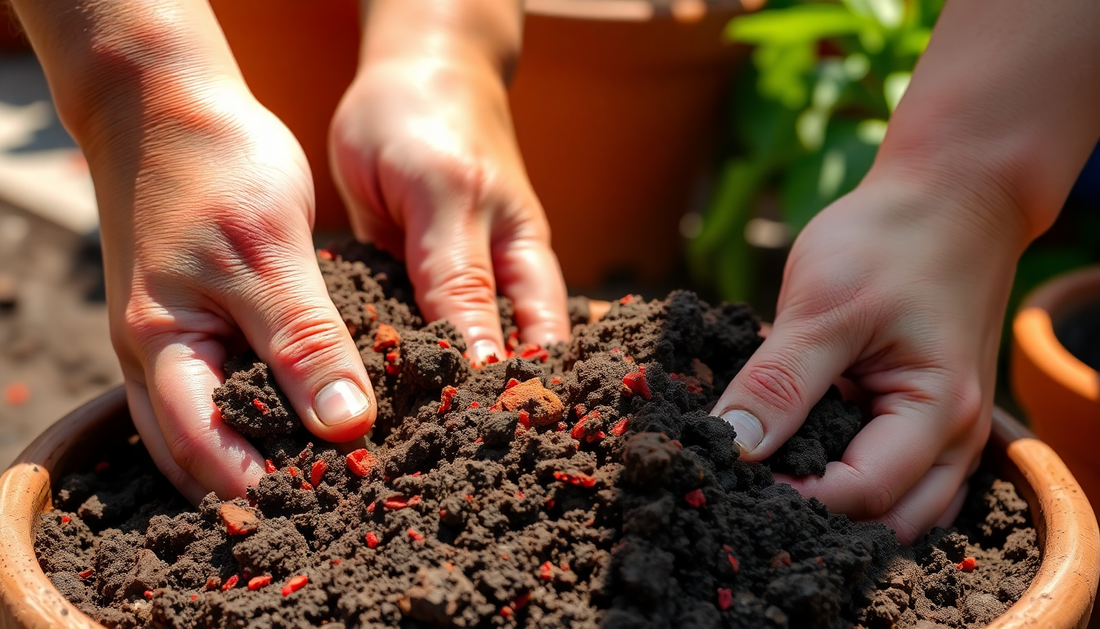
Elevating Your Potting Mix: A Guide to Creating a Clay Soil Amendment
As a passionate gardener, you know that the quality of your soil can make or break the success of your plants. If you're dealing with heavy, clay-based soil, you may have struggled to find the right balance of nutrients, drainage, and aeration to create the perfect potting mix. Fear not! In this comprehensive guide, we'll explore the art of crafting a clay soil amendment that will transform your gardening experience.
Understanding Clay Soil
Clay soil is notorious for its dense, compacted nature, which can make it challenging for plants to thrive. This type of soil is characterized by its fine, sticky particles that can become waterlogged and impede proper drainage. While clay soil can be rich in essential nutrients, its poor aeration and drainage can lead to root rot, stunted growth, and other issues.
The Benefits of a Clay Soil Amendment
Incorporating a clay soil amendment into your potting mix can provide a range of benefits for your plants:
Improved Drainage
By adding materials like perlite, sand, or compost to your clay soil, you can create a more porous and well-draining medium, allowing excess water to flow freely and preventing waterlogging.
Enhanced Nutrient Retention
Clay soil is known for its ability to hold onto nutrients, but a clay soil amendment can help ensure that these essential elements are readily available to your plants.
Increased Aeration
A well-crafted clay soil amendment will introduce more air pockets into the soil, allowing roots to breathe and thrive.
Better Root Growth
With improved drainage and aeration, your plants will be able to develop stronger, healthier root systems, leading to more vigorous growth and better overall plant health.
Crafting the Perfect Clay Soil Amendment
To create your own clay soil amendment, you'll need a few key ingredients:
Organic Compost
Compost is a fantastic addition to clay soil, as it helps to improve soil structure, increase nutrient content, and enhance water-holding capacity.
Perlite or Sand
These materials will help to break up the dense clay particles, creating a more porous and well-draining potting mix.
Vermiculite or Coir
These ingredients can further enhance the water-holding and aeration properties of your clay soil amendment.
Dolomitic Lime
Adding a small amount of dolomitic lime can help to balance the pH of your soil, ensuring that your plants have access to the nutrients they need.
To create your clay soil amendment, follow these steps:
- Start with a base of high-quality compost, aiming for a ratio of around 50% compost to 50% clay soil.
- Add perlite or sand, gradually increasing the amount until you achieve a well-draining, crumbly texture. Aim for a ratio of 1 part perlite or sand to 2 parts compost-clay mix.
- Incorporate a small amount of vermiculite or coir, using a ratio of about 1 part to 4 parts of the compost-clay-perlite/sand mixture.
- Sprinkle in a light dusting of dolomitic lime, adjusting the amount based on your soil's pH levels.
- Mix all the ingredients thoroughly, ensuring an even distribution throughout the amendment.
Putting Your Clay Soil Amendment to Work
Once you've created your custom clay soil amendment, it's time to put it to use. Here are some tips for incorporating it into your potting mix:
Potting Mixes
When creating your potting mix, aim for a ratio of 50-60% clay soil amendment to 40-50% additional ingredients, such as peat moss, bark, or other organic matter.
Container Gardening
For container-grown plants, use your clay soil amendment as the foundation, then top it with a layer of high-quality potting soil or compost.
Raised Beds
Incorporate your clay soil amendment directly into the soil of your raised beds, mixing it in thoroughly to a depth of 8-12 inches.
Maintaining Your Clay Soil Amendment
To ensure the long-term success of your clay soil amendment, it's important to maintain it properly. Here are some tips:
- Replenish the amendment annually by topping up your potting mixes or raised beds with fresh compost and other ingredients.
- Monitor soil moisture levels and adjust watering practices as needed to prevent waterlogging or drought.
- Regularly test your soil's pH and make adjustments with dolomitic lime or sulfur as necessary.
- Consider adding a layer of mulch to your garden beds to help retain moisture and suppress weed growth.
By taking the time to create a custom clay soil amendment, you'll be well on your way to cultivating a thriving garden that can withstand the challenges of heavy, clay-based soil. Embrace the power of this versatile gardening tool and watch your plants flourish!
Conclusion
Transforming clay soil into a nutrient-rich, well-draining medium is a game-changer for any gardener. By crafting a custom clay soil amendment, you'll unlock the full potential of your plants, allowing them to thrive and reach new heights. With the right blend of organic matter, aeration-boosting ingredients, and pH balancing agents, you can create a potting mix that will set your garden up for success. So, roll up your sleeves, get your hands dirty, and start building the foundation for a truly remarkable gardening experience.







No comments